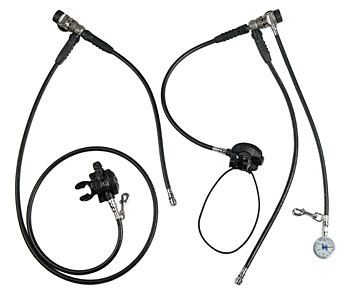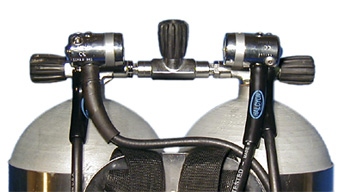Manifolds
Manifolds are designed to connect two cylinders together to allow divers access to either or both cylinder. As divers continued to explore deep and overhead environments, it became necessary to maximize access to their gas supply, which was accomplished by attaching two first stages to one manifold. Should the regulator, o-ring, or hose fail, the diver merely shuts down the supply to that regulator, thereby preventing any further loss of gas. Because the valve knob nearest the regulator only controls flow to that first stage, the diver, through the manifold, still has access to the gas in both cylinders.
In the very unlikely event of a catastrophic failure of the tank neck o-ring or the burst disk, the diver can close the isolator valve and interrupt the airflow to that side of the manifold, thereby protecting the gas supply in the other cylinder. Manifolds should have barrel-style o-rings, no face seals, and should be adjustable. The 300 bar manifold provides more threaded depth and a more secure attachment. Valves should face straight, with no angles. Manifolds that place regulators at an angle increase their exposure and elevate the risk of breaking DIN connections.










